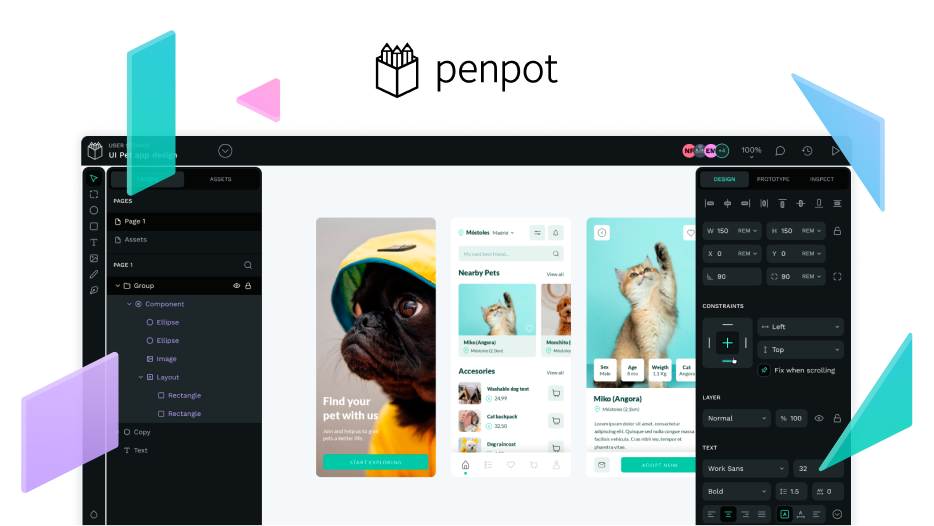What are the plans to charge for Penpot at some point?
As an open-source product, we get this question a lot. This usually comes from a project sustainability standpoint. Still, we believe this inquiry also has to do with the fact that we are a design & prototyping tool and this is a space where there’s typically some inevitable trap.
With our incredible growth both in our cloud platform as well as our self-host option, we now get this question almost on a daily basis. We already covered this topic in various places but it doesn’t do any harm to have a comprehensive FAQ entry for it to explain our Free For Ever policy.
TL;DR
Penpot will eventually have a pricing model for both SaaS and self-host deployments. Most likely we will follow our own “tax the controller” model where the paid tiers target medium to big organizations in need of specific “configuration” features that are not needed by power users, who will enjoy Penpot Free For Ever. Other options like marketplace fees for paid templates and libraries could also be an option. We expect our first paid tier to be ready by the end of 2024. Right now, this is not our focus at all.
In detail
Our previous experience with Taiga was a great learning experience on how different monetization strategies can work for an open-source product. SaaS-only per-seat freemium pricing doesn’t really work at scale. Your self-host option (which we believe has to be ridiculously easy to deploy) will quickly cannibalize your SaaS user base. This is particularly true for team productivity tools where there is a clear incentive to spin out your own instance instead of going SaaS. The good news is that if you build a truly robust platform, you can have tens of thousands of active deployments and yet have a pretty silent tech support channel.
This is why we strongly believe our pricing will cover self-host and SaaS options at the same time, so we really don’t care which Penpot deployment option you prefer. For this we have two simple rules:
- Everything power users care about will always be open source and therefore free for ever. A power user is typically a designer or a developer that uses Penpot as one of their key productivity tools to deliver value to a project.
- Anything that was once open source will remain open source forever.
So what to charge for and to whom? We’re looking at enterprise features needed by medium to big organizations to ensure legal or security compliance (think of a company-wide enforced 2FA). Also, features that bring value to senior management (think of multi-team views/controls/reporting). This revenue is funneled into ensuring we keep innovation at both the open source level and the premium level.
Now, the obvious challenge here is that if you go for a skinny open-core model where 99% of your product is open-source, you need a huge footprint to be successful at a business level and with that sustainability. You need to give away a lot before considering asking for some money. That is the reason why our focus can’t be right now on “premium features” when there’s still so much at stake in terms of the open-source product. We chose investors that are 100% aligned with this and we love how they publicly have shared these same ideas and values!
In other words, we have BIG plans for the future, it can’t be any other way!
